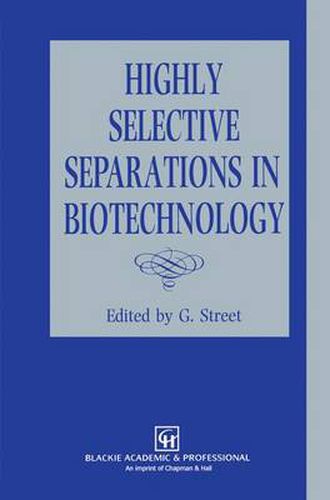Highly Selective Separations in Biotechnology

Highly Selective Separations in Biotechnology
This title is printed to order. This book may have been self-published. If so, we cannot guarantee the quality of the content. In the main most books will have gone through the editing process however some may not. We therefore suggest that you be aware of this before ordering this book. If in doubt check either the author or publisher’s details as we are unable to accept any returns unless they are faulty. Please contact us if you have any questions.
Success in meeting the challenge to produce the commercial products anticipated by the exploitation of biological processes depends upon provid ing effective separation protocols. Effectiveness can be measured in terms of selectivity, purity, resolution and validatory success. The major processing problems are associated with either the selective recovery of molecules which are present in low concentrations from complex mixtures or the selective removal of contaminants from the desired molecule. Central to the evolution of processes satisfying this demand are the regulatory requirements being imposed by governments on the purity of a product, especially in the health care market. Synthetic organic chemists are increasingly finding it advantageous to conduct one or more steps using either enzymic biotransformations where molecules with a single and consistent stereochemistry or chirality are required. The underlying princi ples behind the methods, techniques and processes currently being used and developed commercially rely upon the biospecific nature and properties of the desired molecule. When these factors are married to the more traditional techniques of precipitation, chromatography, liquid-liquid extraction and membrane processes, powerful tools emerge, allowing highly selective separations to be designed. The logical extension of these combinations is to apply genetic engineering techniques to influence the separations at a more fundamental and structural level by modifying the target protein at source, during its synthesis, to facilitate its separation in a given, selective manner, leading to the distinct possibility of producing ‘designer’ separation programmes.
This item is not currently in-stock. It can be ordered online and is expected to ship in 7-14 days
Our stock data is updated periodically, and availability may change throughout the day for in-demand items. Please call the relevant shop for the most current stock information. Prices are subject to change without notice.
Sign in or become a Readings Member to add this title to a wishlist.


